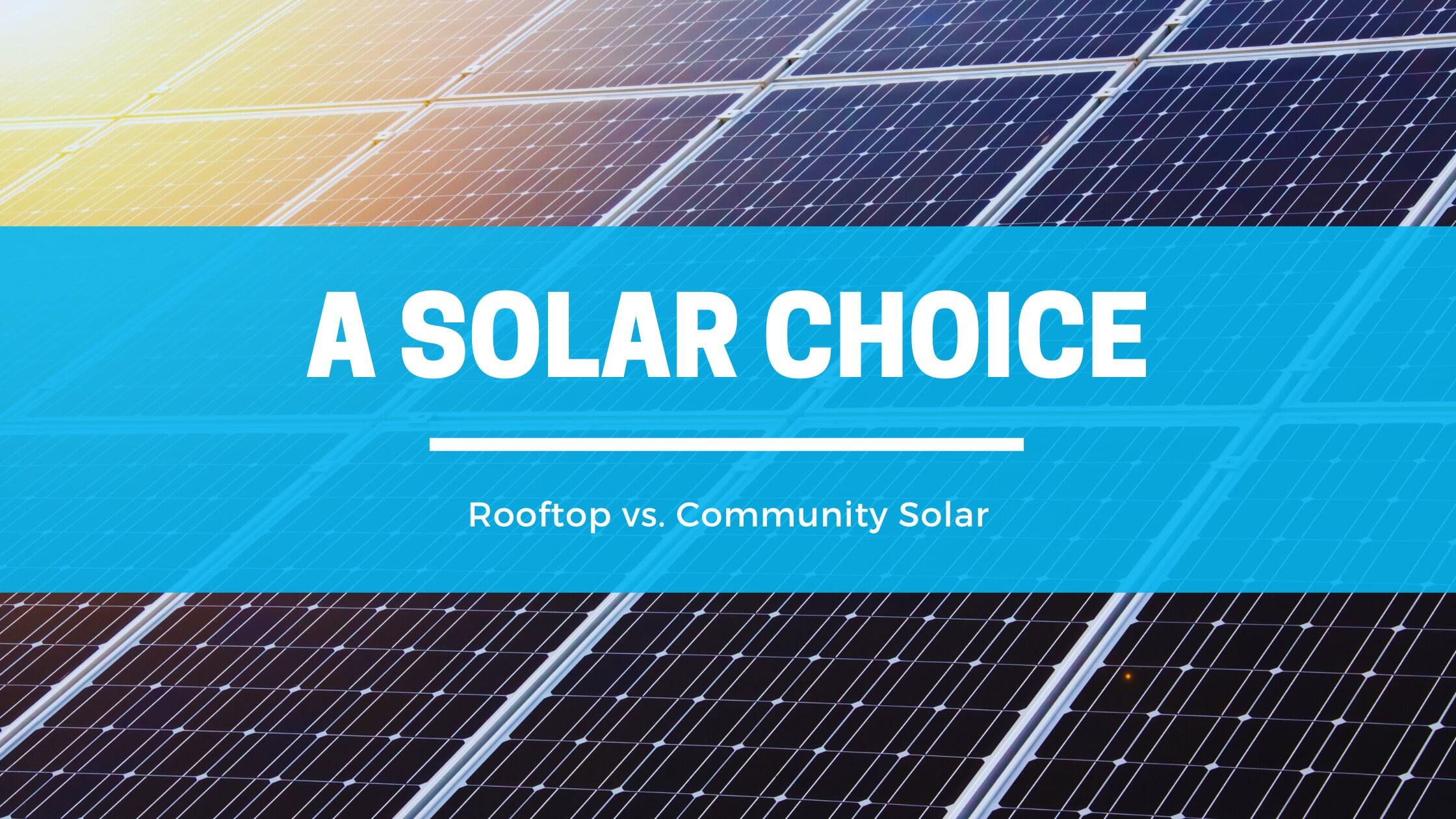- by installing a solar panel system on your property, or
- by participating in a community solar program
If you install solar at your home or business, you’ll purchase and install a rooftop solar panel system, taking advantage of an otherwise empty space to produce electricity. If rooftop solar isn’t an option for you, joining a community solar program lets you enjoy the benefits of solar by receiving a share of the power produced at a local solar farm.
Both community solar and rooftop solar produce 100% renewable energy, aid in reducing energy dependency on fossil fuels, and can cut electricity costs. The biggest differences are the location, ownership, and cost of the solar system.
When comparing your solar options, and specifically rooftop vs. community solar, there are a few things to keep in mind:
- Which option is available and accessible to you
- What are you buying and how much does it cost
- How are you financing it; are there extra fees
- Who maintains the system
- What financial benefits will you receive
- What happens when you move/no longer want to participate
Below is a simple side-by-side comparison:

Bottom line, the most important thing to remember is that both rooftop and community solar are ways to provide clean electricity for your home, help the environment, and save money at the same time. Looking at the big picture, solar and other renewable energy resources in the U.S. helps our nation to be less reliant on global energy markets, protects us from unstable prices and supply disruptions, and support jobs in the growing field of sustainable energy. All these things make residential solar energy a worthwhile choice.
Are you ready to enjoy solar?
By joining a Community Solar project, you've chosen an easy way to support renewable energy, create local power projects that increase regional grid resiliency, and reduce emissions. Joining is simple and you will save money on your electric bills with no upfront cost. All that is needed is five minutes and a utility account. To learn more about how you can go green and keep your green with community solar, go to NautilusSolar.com.

